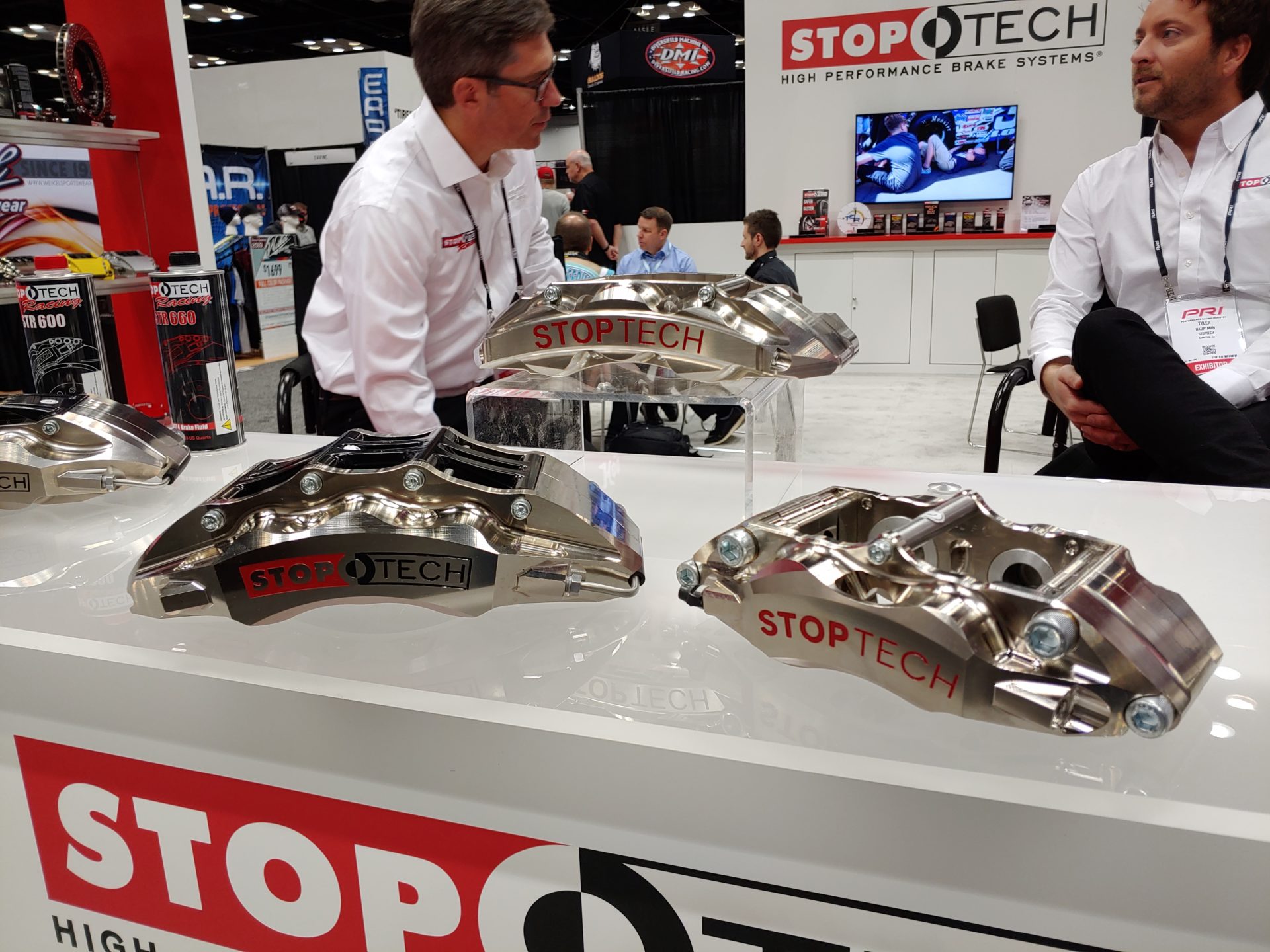
Both the existing 4.6 and the new Coyote cranks will come from 4340 forged steel using a 3.750″ stroke and either 1.889″ or 2.000″ rod journals, which helps reducing block clearancing. The cranks will also feature center counterweights for improved strength and high RPM stability, along with an 8-bolt rear flange to offer the most compatibility with high performance flywheels and pressure plates.
These cranks are then paired with 4340 forged steel H-Beam rods and a variety of pistons to round out the stroker kit. Pistons from Arias, CP, and Mahle are available in combinations supporting 2 valve, 3 valve, or 4 valve cylinder heads. And, to top it off, compression ratios for naturally aspirated and forced induction configurations are also available. You can get the assemblies balanced by Eagle from the factory or unbalanced if you want your own machine shop to do it.
Retail prices are around $2500-$2700 depending on options.


Tilton has now released a new application, the ST-246, for the Chevrolet LS / Coyote and additional specific vehicle applications. This is a new street-style twin-disc clutch assembly, but don’t let the word “street” fool you, as this clutch is jam packed with features handed down from Tilton’s vast racing experience.
The roughly 9.7″ twin discs feature sprung hubs (in the organic material option) with an overall rating of 850ft/lbs of torque, or you can upgrade to solid hubs with a ceremetallic friction material, rated at about 1250ft/lbs of torque. The flywheel is machined from a high-wear resistance chromoly billet, with precision registration for the clutch cover.
That clutch cover is also manufactured from billet, with Tilton’s race technology in the pressure and floater plates. Featuring large, heavy-duty straps to help reduce noise (this is a “street” clutch, after all), the assembly is designed to work with OEM release bearings where possible. Otherwise, the Tilton 6000-series hydraulic release bearings can be easily used.
The ST-246 should be available from your favorite Tilton retailer, including Pegasus Auto Racing, with a retail price of $1495 — entirely reasonable for such a fully featured twin disc clutch!

Pictured here is Fuelab’s brushless screw pump with an industry standard 10-bolt flange mount configuration. This is available as a stand-alone pump assembly for drop-in use with fuel cell top plates, but also in combination with Fuelab’s 2.1- or 2.7L surge tanks.
With 6 pump models available, you can select a configuration to support up to 1250 horsepower at only 60PSI all while consuming less than 10A of current!




8 comments
I’d like to see a study on the differences between split calipers like the stoptechs and forged monoblock calipers like AP/Alcons. Other than saving a few grams what do you get for a 50% price hike?
I’ve thought about putting a Fueltech ECU dash on my miata on and off since I heard about them. The support is what’s holding me back, there is a huge community of Megasquirt miata owners that can offer support. But the FT450 looks like a badass deal to me, ECU + dash + datalogger, it even has an internal MAP sensor.
I mean, it really wouldn’t be that hard of a test to do, just expensive as it’s not like they give the suckers away. You’re also going to have to try to be apples to apples, as I have a strong suspicion that some parts of AP, Alcon, PFC etc’s lineup have picked different values on the compromise scale of stiffness vs weight or are designed with different constraints. A lot of the high buck monoblock calipers are built to specific classes/configurations. Like, just as a for example, I think the STR60GT is (I think) a similar pad shape/volume to the Alcon TA6 caliper, but will it fit as big of a rotor into a 16″ race wheel? Probably not, because Stoptech probably wasn’t designing for a specific class.
The max rotor size is a good argument I hadn’t though of. You can probably get the same stiffness and rotor/pad size for half the price by going with a split caliper but if you want the biggest rotor you can fit in a wheel then monoblock would be the only option.
Which is not anything against Stoptech IMO, it’s just a “stuff designed to the limits of rules for specific applications will do better at that then a generalist design” thing.
@Nicolas Girard
Most modern racing ECUs have internal MAP as well as some level of logging. It’s really the integrated dash that is the bonus, as that’s generally a $600+ option from just about any other vendor.
For a non-forced-induction BP6 (I’m assuming NA/NB motor that doesn’t even have VVT) you really are fine with anything. If your motor is already running on the Megasquirt, you could go with one of the logging dashes like the AEM CD7-L. It’s pricey, but would round out everything you need, and in the future you could use any other ECU with that setup.
If you don’t have anything yet, the FT450 could be a great option, and the support should be pretty good. FuelTech is based right around the corner from me in Georgia and they’re super friendly. Most of your “issues” would be around wiring (no plug-and-play FT450-BP6 harness) and a base map (FuelTech probably doesn’t do many NA 4-cyls). But motors will run even with pretty bad maps and you just need to get it going well enough to get on the dyno =)
Thanks for the info, I’ve never installed an ECU myself, I’m looking at swaping my 200k miles BP6 to a later model engine BP4W or BPZ3 and the Megasquirt looks like the easiest option.
NA/NB miatas have chunky MAF sensors instead of MAP, I thought the megasquirt didn’t have an internal MAP (it does) because I’ve read about putting in a GM IAT/MAP sensor when you delete the MAF.
TIL: Turns out you do it because the MAF module you delete also has the intake air temp sensor inside, the GM part has the IAT and gives you a second MAP for barometric data.
For a first time, the plug in ECU with the wide user base is probably the more intelligent choice. The FT450 is still a great deal, it’s a bit cheaper than the MSpnpPRO, has a dash and real slick program.
The AEM dash is a cool piece but it is half the price of the Miata on its own. it would look off brand next to the knockoff Bride seats and cheapo NRG steering.
All good points. That MS3 Pro with a plug-and-play harness is going to work great. Good luck!
In theory the advantage of 1 piece calipers is less flex.
In practice I think would be hard to tell.